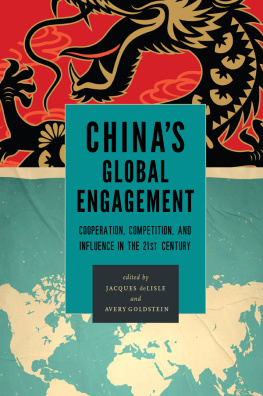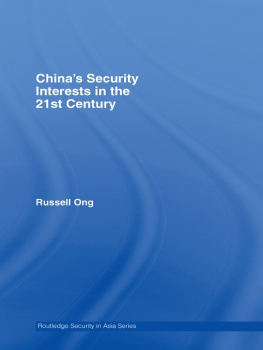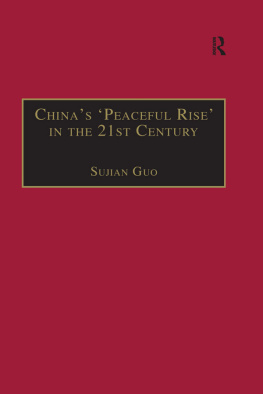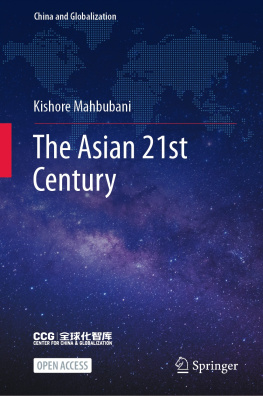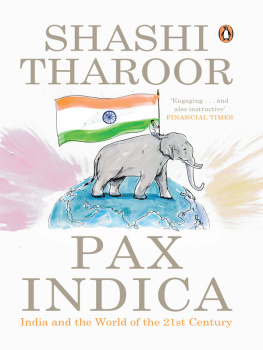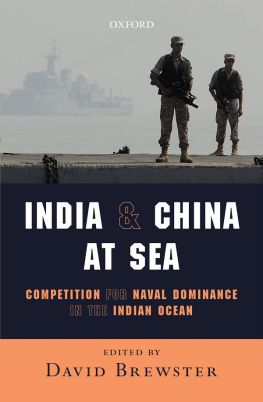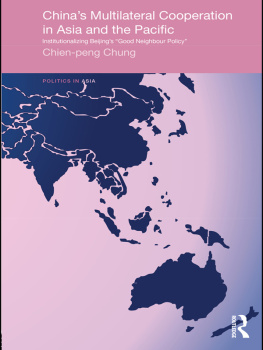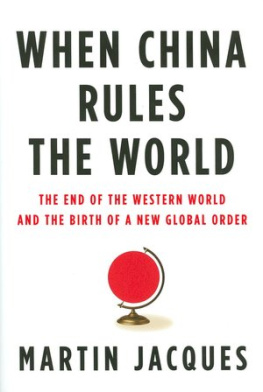Cooperation, Competition, and Influence in the Twenty-First Century
JACQUES DELISLEAVERY GOLDSTEIN
EDITORS
BROOKINGS INSTITUTION PRESS
Washington, D.C.
Copyright 2017
THE BROOKINGS INSTITUTION
1775 Massachusetts Avenue, N.W., Washington, D.C. 20036
www.brookings.edu
All rights reserved. No part of this publication may be reproduced or transmitted in any form or by any means without permission in writing from the Brookings Institution Press.
The Brookings Institution is a private nonprofit organization devoted to research, education, and publication on important issues of domestic and foreign policy. Its principal purpose is to bring the highest quality independent research and analysis to bear on current and emerging policy problems. Interpretations or conclusions in Brookings publications should be understood to be solely those of the authors.
Library of Congress Cataloging-in-Publication data
Names: deLisle, Jacques, 1961 editor. | Goldstein, Avery, 1954 editor.
Title: Chinas global engagement : cooperation, competition, and influence in the 21st century / Jacques deLisle and Avery Goldstein, editors.
Description: Washington, D.C. : Brookings Institution Press, 2017.
Identifiers: LCCN 2017000420 (print) | LCCN 2017008162 (ebook) | ISBN 9780815729693 (paperback) | ISBN 9780815729709 (ebook)
Subjects: LCSH: ChinaForeign relations21st century. | ChinaForeign economic relations21st century. | ChinaMilitary policy. | BISAC: POLITICAL SCIENCE / Political Freedom & Security / International Security. | POLITICAL SCIENCE / International Relations / General.
Classification: LCC JZ1734 .C5488 2017 (print) | LCC JZ1734 (ebook) | DDC 327.51dc23
LC record available at https://lccn.loc.gov/2017000420
9 8 7 6 5 4 3 2 1
Typeset in New Baskerville
Composition by Westchester Publishing Services
CONTENTS
AVERY GOLDSTEIN
GREGORY T. CHIN
DANIEL C. K. CHOW
EDWARD S. STEINFELD
CYNTHIA A. WATSON
JONATHAN D. POLLACK
ALLEN CARLSON
ROBERT S. ROSS
JACQUES DELISLE
PITMAN B. POTTER
DAVID ZWEIG
STANLEY ROSEN
RANDY KLUVER
ACKNOWLEDGMENTS
The chapters in this book are based on papers initially presented at the third annual conference of the Center for the Study of Contemporary China at the University of Pennsylvania. We are grateful to a distinguished set of discussants at the conference whose comments and suggestions provided valuable guidance as the authors prepared their chapters. These individuals include Taylor Fravel, Tom Gold, Miles Kahler, Damien Ma, Phillip Saunders, Jeff Wasserstrom, Guobin Yang, and Minyuan Zhao.
We thank all of the conference participants for their helpful comments during lively discussions at our sessions, and thank the anonymous reviewer whose comments on our original manuscript helped improve the chapters. We are also very grateful to Bill Finan, Janet Walker, Elliott Beard at Brookings Institution Press, and Angela Piliouras at Westchester Publishing Services, who facilitated the preparation of this volume.
This book would not have been possible without the financial support of the Center for the Study of Contemporary China, whose funding is provided by the University of Pennsylvanias provost, as well as Penns School of Arts and Sciences, Law School, Annenberg School for Communications, and Wharton School. We thank Yun Huang for assistance in running the conference. We are especially grateful to Dr. Yuanyuan Zeng, Associate Director of the Center for the Study of Contemporary China, whose distinctive combination of substantive expertise and administrative skills are vital to the success of the centers program of which this book is a part.
A Rising Chinas Growing Presence
The Challenges of Global Engagement
AVERY GOLDSTEIN
The second decade of the twenty-first century has been a period of transition within China and in Chinas international relations. At a moment in its history when Chinas leaders have been addressing domestic challenges that have emerged after three decades of dramatic reforms, they have also been refashioning their countrys foreign policy to better fit what they see as Chinas place in a changing world order. The recalibration of Chinas foreign policy has been visible in an increasingly proactive approach to international economic affairs, a more vigorous approach to international security affairs, and a more focused approach to its engagement with international cultural and educational affairs. In each of these areas, the trajectory of Chinas international relations has reflected dramatic developments within China in the decades since the death of Mao Zedong and within the international system its leaders have faced. While the future of Chinas global role defies prediction, it is possible to take stock of national and international factors that account for Chinas current posture. This chapter begins, however, by briefly looking backward, to put recent trends in historical perspective.
FROM A REGIONALIZED WORLD ORDER TO THE MODERN ERA
Chinas rise to prominence in the twenty-first century actually marks the countrys reemergence as a political entity with important relations extending beyond the realm over which its leaders formally rule. Beginning in 221 B.C., a series of imperial dynasties controlled territories in the area that is todays China. During these millennia, the empires relations with the world beyond its boundaries were mostly regional rather than global in scope as interactions across often loosely defined borders and vast oceans were limited by prevailing transportation and communications technologies. In its part of the globe, however, China was typically the greatest economic and military power.
The Celestial Empire itself consisted of a political core (or heartland) that interacted with and typically dominated its periphery. The organizing principle of this order contrasted sharply with that of the modern international order of formally sovereign and equal states first established in the European regional system by the Treaty of Westphalia in 1648. But despite this distinctiveness, exchanges between the empires core, its periphery, and even more distant reaches of the world resembled what we now think of as international relations. Goods and ideas (especially the religious beliefs of Buddhism and Islam) flowed into China across the mountains that marked the southern periphery and across the vast and desolate western periphery along what became known as the Silk Road. Chinas maritime reach, though generally limited, also led to interaction with the closest parts of the periphery in East Asia, including Japan, Taiwan, and Oceania.
Chinas prestige as the center of Confucian culture and the regional dominance of Sinitic civilization in East Asia proved resilient even during periods when the capacity of the ruling dynasty waned. On the two occasions when invaders from the northern periphery (Mongols in the thirteenth century and Manchus in the seventeenth century) used military victories to establish their own dynasties (the Yuan and the Qing) to rule the core, these outsiders embraced the essential practices of the political, economic, and cultural system already established by the Han Chinese insiders centuries earlier. Thus, for nearly two millennia imperial Chinas influence as the key player, if not always the omnipotent hegemon, within its regional system endured.


